
Health expert Dr Michael Mosley shares two tips for avoiding osteoporosis
Health “guru” Dr Michael Mosley has offered his advice to those seeking to reduce their risk of developing osteoporosis, a condition characterised by weak or brittle bones. The medical expert and former doctor is known for his regular appearances on The One Show, as well as his TV programmes on health and medicine. Writing in his column for MailOnline, the creator of the 5:2 and Fast800 diets said he had found his bones were not as strong as they could be while filming a series about healthy ageing in 2022. “Like many Britons, my bones are weaker than they should be,” he wrote. “While filming a series about healthy ageing last year, I had a DXA scan, which uses low-dose X-rays to see how dense (or strong) your bones are. “Although I have a sturdy spine, my hip bones aren’t in great shape, though I don’t have osteoporosis.” Dr Mosley explained that the key to avoiding osteoporis involves getting a healthy intake of both calcium and Vitamin D, as well as a short but effective burst of exercise each day. “As well as obvious good calcium sources such as dairy and leafy green veg, you may want to top up on prunes,” he suggetsed. “A study last October in the American Journal of Clinical Nutrition, involing 235 older women, concluded eating five to six prunes a day improved bone density. The theory is that anti-inflammatory compounds in prunes may slow bone breakdown.” He also suggested that daily exercise could also help, citing a study that showed two minutes of hopping each day can improve hip bone strength. In 2020, Dr Mosley claimed that men were “more deluded” than women when it came to their own weight and fitness, while fronting a Channel 4 series to help people who had gained weight during lockdown. He told the Press Association: “An awful lot of people are unaware of how much weight they put on, particularly around the gut.” Research shows that only 10 per cent of people who are obese know they are but that the figure is only 7 per cent for men, Dr Mosley said, while “women are more aware of it”. He also denied that the show, which offers practical advice to overhaul viewers’ lifestyles, was about fat shaming: “Body shaming is awful. It is incredibly ineffective. Telling people they’re fat never, ever works,” he said. “None of this is about fat-shaming. It is entirely about helping people who are obese and who want to do something about it. Any diet is only ever going to work if the person wants to do it.” Read More Jamie Foxx and Jennifer Aniston issue statements over ‘antisemitic’ Instagram post Why is every celebrity couple breaking up? Relationship experts think we shouldn’t be so shocked Eye masks, kombucha and ‘the full spectrum of milks’: Gwyneth Paltrow finally gave us a tour of her fridge Health expert Dr Michael Mosley shares two tips for avoiding osteoporosis Will Smith says Willow ‘mutiny’ changed his view on family success Who was controversial vegan raw food influencer Zhanna D’Art:
2023-08-07 14:20
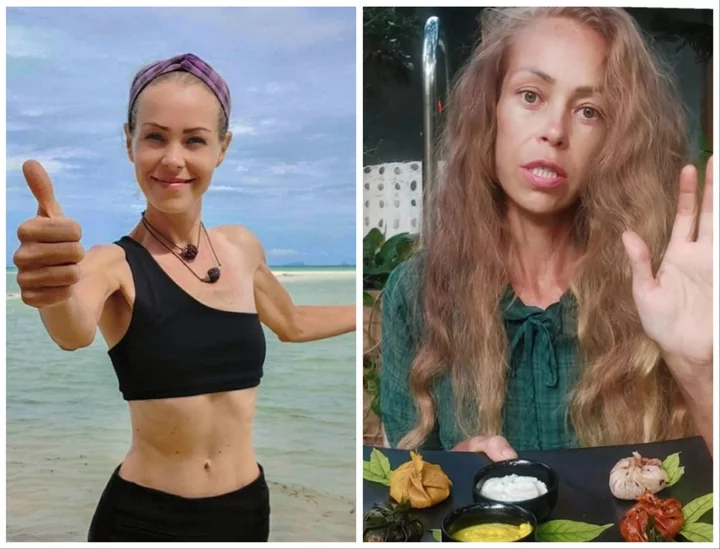
Zhanna D’Art: Who was the controversial vegan raw food influencer who died from ‘starvation’?
Zhanna Samsonova was just 39 when she died, reportedly from “starvation and exhaustion”, thousands of miles from her birthplace in Moscow, Russia. The Instagram influencer’s tragic story has come under scrutiny due to her promotion of a completely “raw” diet, which reports have suggested was linked to her death. Under the name Zhanna D’Art, Samsonova regularly wrote about how she subsisted exclusively on fruit, vegetables, seeds, smoothies and juices while living in Malaysia. Her mother, Vera, attributed Samsonova’s death to a “cholera-like infection” that was exacerbated by her diet. In recent weeks, Samsonova had been unusually quiet on Instagram, with the exception of a troubling post shared just days before her death on 21 July. “Life is meaningless but worth living provided you recognise it’s meaningly,” she wrote, over a photo of herself wearing sunglasses, with a gasping expression on her face. Vera, 63, told Russian newspaper Novye Izvestia how she had begged her daughter to return home as she feared for her health. “I understood that Zhanna was about to die, but still I could not help her in any way. My daughter's life has turned into a nightmare,” she said, via LBC. She told the publication that she had “fought for years” to save her daughter, once an aspiring model, but she “refused to listen”. Samsonova is believed to have left Russia in 2006, buying a one-way ticket to spend the past 17 years travelling around Asia while blogging and practicing yoga. Photos shared by Vera showed a smiling Samsonova apparently taking part in a modelling contest. The images are in stark contrast to the final photos she shared of herself before her death, where she appeared visibly gaunt and malnourished. Her friends also spoke with local media, confessing they feared she was suffering from anorexia and that her diet was becoming increasingly limited. One of her neighbours, who was not named, said she was “horrified” when they met in Sri Lanka a few months ago, as Samsonova looked “exhausted” and had swollen legs “oozing lymph”. “They sent her home to seek treatment. However, she ran away again. When I saw her in Phuket, I was horrified,” the friend said, according to The Sun. “I lived one floor above her and every day I feared finding her lifeless body in the morning. I convinced her to seek treatment, but she didn’t make it.” Samsonova regularly made claims about the supposed benefits of her raw food diet, including that it offered “natural” protection from Covid-19. She also claimed that her body did not “require” water, writing last year that her fruit-based diet meant she had gone without water for the past six years. In recent months, she appeared to have become a fan of the durian fruit, sharing frequent posts that promoted it. “It’s that fabulous time of year again – Durian Season in Thailand!” she wrote in the caption of one of her final videos. “Wake Up And Smell the Durian! For all you durian lovers out there, isn’t it just the best? And for those who haven’t yet experienced the joy of durian, you’re in for a wild ride!” When she died, Samsonova had around 16,000 followers. At the time of writing, however, that number had increased to 33,000. There have been previous cases where people have starved to death due to their extreme diets, including children whose food intake was controlled by their parents. Last year, a vegan mother was sentenced to life in prison over the death of her 18-month-old son, who was fed a diet of raw fruits and vegetables. Prosecutors said that Sheila O’Leary’s son Ezra was severely malnourished, and weighed just 17 pounds when he died in September 2019. O’Leary was convicted by a Florida jury in June 2022 of first-degree murder, aggravated child abuse, aggravated manslaughter of a child, child abuse and two counts of child neglect. For anyone struggling with the issues raised in this article, eating disorder charity Beat’s helpline is available 365 days a year on 0808 801 0677. NCFED offers information, resources and counselling for those suffering from eating disorders, as well as their support networks. Visit eating-disorders.org.uk or call 0845 838 2040 Read More Vegan raw food influencer ‘dies of starvation and exhaustion’ ‘Love, obsession, extortion and murder’: The dramatic downfall of TikTok influencer who became a killer Royal family silent as Meghan Markle celebrates 42nd birthday Who was controversial vegan raw food influencer Zhanna D’Art: Health expert Dr Michael Mosley shares two tips for avoiding osteoporosis Will Smith says Willow ‘mutiny’ changed his view on family success
2023-08-07 13:58

Will Smith says daughter Willow’s ‘mutiny’ changed his view on success
Will Smith says a “mutiny” by his daughter, Willow Smith, is what first caused him to change his perspective of success. The Hollywood actor has been stepping back into the spotlight following his infamous outburst at the 2022 Oscars, where he slapped Chris Rock on stage after the comedian made a joke about his wife, Jada Pinkett Smith. In an interview with fellow actor and comedian Kevin Hart, on his Peacock show Hart to Hart, Smith spoke about the moment his family rose to fame in 2010. While Smith had enjoyed his own success from 1999 thanks to NBC’s sitcom The Fresh Prince of Bel Air, Willow and his son Jada achieved their own fame in the early Noughties. Musician Willow, 22, released her debut single “Whip My Hair” in 2010, breaking into the UK and US charts when she was just nine years old. Meanwhile Jaden, a rapper and actor, starred opposite Jackie Chan and Taraji P Henson in The Karate Kid that same year, when he was 11. “2010 was like the greatest year as an artist, as a parent,” Smith told Hart, Metro reports. “Karate Kid came out in June and ‘Whip My Hair’ came out in October. I’m building this dream of a family I’ve had in my mind. I’m going to do it better than my father did it. We’ve talked about it, my father was abusive.” Smith seemed to imply that he was too hard on his family while trying to achieve the vision he had of a successful family. “‘No one wanted to be in a platoon,” he said. “Willow was the first one to begin the mutiny and it was my first realisation that success and money don’t mean happiness. “Up until that point, I really believed that you could succeed your way – to a house and a family – and you could win your way to happiness.” In a 2022 interview with The Independent, Willow Smith revealed that her parents struggled to understand her while she was growing up, due to their different upbringings. Meanwhile Jaden, 25, asked to become emancipated – where a child is removed from the control of their parents or legal guardians – from his parents when he was a minor, aged 15. His request came after he starred opposite his father in the box-office disaster, After Earth, which was also panned by critics. In his 2021 memoir, Smith recalled the moment his “heart shattered” when Jaden asked to become emancipated. “And what was worse was that Jaden took the hit,” the Independence Day star wrote, adding: “Jaden had faithfully done everything that I’d instructed him to do, and I had coached him into the worst public mauling he’d ever experienced.” Jaden ultimately decided against pursuing emancipation, but moved out of his family home that year. Will Smith is currently shooting a Bad Boys sequel with Martin Lawrence, with whom he has co-starred in three previous Bad Boys films, including the 1999 original. Read More Netflix leaves fans distraught as it announces end of beloved series One Tree Hill star Sophia Bush changes name after ‘filing for divorce’ from husband Grant Hughes Zhanna D’Art: Who was the controversial vegan raw food influencer who died from ‘starvation’? Who was controversial vegan raw food influencer Zhanna D’Art: Eva Mendes reveals she doesn’t let her daughters use the internet What is Stiff Person Syndrome?
2023-08-05 22:55

Eva Mendes reveals she doesn’t let her and Ryan Gosling’s daughters use the internet
Eva Mendes has revealed that she doesn’t let her and Ryan Gosling’s daughters use the internet. The actor, 49, took to Instagram on 3 August to share one of the rules that she has for her and Gosling’s daughters - Esmeralda, eight, and Amada, seven. Mendes shared a video of herself shaking her head no and wagging her finger, as she pointed out that’s how she responds to her children when they ask to use the internet. “When my kids ask me if they’re old enough to go on the internet, social media or anything requiring wifi,” she wrote in the caption. When a fan in the comments asked when she will allow her children use the internet, Mendes candidly confessed that she’s still figuring that out. She also specified that she’s been doing research on how social media can impact children as they continue to get older. “I honestly don’t know. I have to see where it goes,” the Hitch star responded. “For now, I’m observing them and keeping up with research about how social media can impact a child’s brain.” She responded to another fan who praised her parenting decision, with Mendes noting that while she’s “just sharing what [she] feels now”, she thinks it’ll be harder to keep her children away from the internet as they get older. Mendes clarified that her children are still given screentime, adding: “I let my kids use the iPad to make movies and watch films I’ve downloaded, but I don’t have internet access on the iPad.” The actress was also hit with some criticism for her parenting rule, with one Instagram user writing: “We are in the internet century so eventually everyone will need or want to access the internet sorry.” While it appears the comment has since been deleted, Mendes responded to the remark by explaining why she doesn’t feel like the internet is a safe space for her children. “In my house, children do not have access to the internet,” she responded to the remark, as reported by E! News. “It’s too dangerous. Just like drinking or voting or getting a driver’s license (etc..) isn’t allowed for children, the internet falls under that category for me. Especially social media.” While Mendes and Gosling - who’ve been together since 2011 - are notoriously private about their family life, the couple have shared a few details about raising children together. During an interview with Byrdie in July 2022, Mendes explained that she and her partner want to make sure that their children feel confident in themselves throughout everything they do in life. “Hopefully Ryan and I are doing the work by just loving them, completely loving them, and doing most of that work for them so that they grow up feeling like they’re enough,” she said. “That’s the one thing that’s really important to me. Because once they feel like they’re enough, no matter what they do, no matter what they end up doing, that will feed into every area of your life. Especially into how attractive you feel, or any of that stuff.” In a cover story interview with GQ in June, Gosling also shared some candid thoughts about fatherhood. He revealed that prior to his relationship with Mendes, he didn’t think much about becoming a father. However, that all changed when Mendes told him she was pregnant. “Eva said she was pregnant,” he recalled. “I would never want to go back, you know? I’m glad I didn’t have control over my destiny in that way, because it was so much better than I ever had dreamed for myself.” Elsewhere in the interview, the Barbie star clarified previous comments he made about the moment Mendes learned she was pregnant. While he maintained that he “wasn’t thinking about kids” before they met, Gosling said: “After I met Eva, I realised that I just didn’t want to have kids without her.” Read More Eva Mendes shows off dress made out of sponges as she jokes it’ll be her Oscars outfit Ryan Gosling’s daughters hilariously prove ‘nobody plays with Ken’ Ryan Gosling’s subtle tribute to Eva Mendes at the Barbie premiere Eva Mendes reveals she doesn’t let her daughters use the internet What is Stiff Person Syndrome? Nearly half of US adults are interested in taking weight loss prescription drugs
2023-08-05 16:15
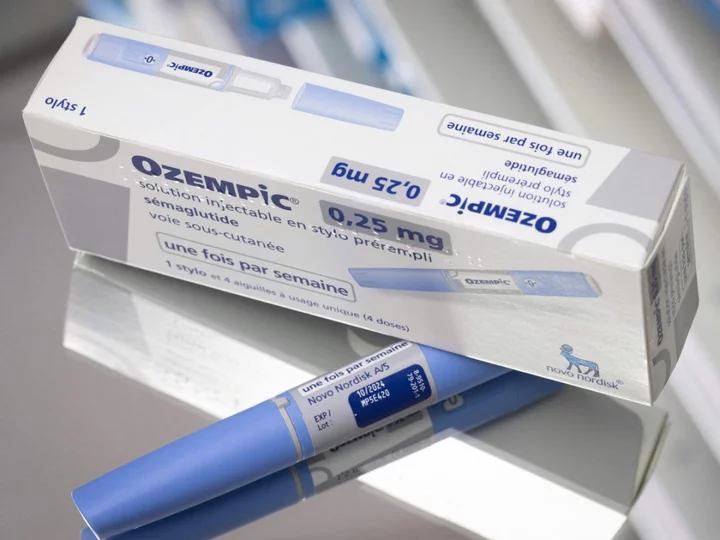
Nearly half of US adults are interested in taking weight loss prescription drugs, survey finds
A new survey has found that nearly half of adults in the United States are interested in taking prescription drugs for weight loss, such as Ozempic or Wegovy. In a KFF health tracking poll published on 3 August, researchers reported that 45 per cent of adults said they’d be interested in taking a “safe and effective” prescription drug for weight loss. Meanwhile, seven in 10 adults said they’ve heard at least “a little” about a new class of drugs being used for weight loss, with about one in five saying they have heard “a lot” about these drugs. Ozempic is a type 2 diabetes medication known for its weight loss side effects. Similar semaglutide injections, such as Wegovy and Mounjaro, have been specifically approved for the treatment of obesity and weight loss. This class of drugs called GLP-1 agonists works by mimicking a hormone called glucagon-like peptide 1 (GLP-1), regulating blood sugar levels and slowing down the rate at which food leaves the stomach to create the feeling of fullness. Of the US adults surveyed, older groups were some of the most aware of prescription weight loss drugs, with 76 per cent being those who have been told by a doctor in the past five years that they are overweight or obese. Nearly 60 per cent of those surveyed said they were currently trying to lose weight as well. While there was an overall interest in taking a prescription weight loss drug, that interest significantly decreased when people were asked whether they would take the medication as a routine injection. Only 16 per cent of adults said they would still take Ozempic or Wegovy, even if it wasn’t covered by their health insurance and was not specifically approved by the US Food and Drug Administration for weight loss. In fact, most people believed that insurance companies should cover the cost of weight loss drugs for adults who are overweight or obese, with an overwhelming 80 per cent of adults. Additionally, a large majority of adults believed the substantial profits that pharmaceutical companies have made from increased demand for weight loss drugs is a major factor contributing to the cost of injections like Ozempic and Wegovy. According to Novo Nordisk, the pharmaceutical company behind these prescription drugs for diabetes and weight loss, the list price for Ozempic can cost $935.77 per month without health insurance. Although the majority of adults said they trust pharmaceutical companies like Novo Nordisk to provide “reliable information” about safety and side effects of GLP-1 agonists, only 22 per cent said they trust these companies to price their products fairly. The FDA has listed the most common side effects of taking Wegovy as nausea, diarrhea, vomiting, constipation, abdominal pain, headache, fatigue, indigestion, dizziness, and digestive disorders. More serious complications can occur from use of Wegovy or Mounjaro, such as the “potential risk of thyroid C-cell tumours,” pancreatitis, gallbladder problems, acute kidney injury, increased heart rate, and suicidal behaviour or thinking. Taking Ozempic can also lead to possible thyroid tumours, including cancer, pancreatitis, changes in vision, and kidney and gallbladder problems. Recently, several patients reported suffering from severe gastroparesis, also known as stomach paralysis, after taking the prescription weight loss medications. In a report from CNN, two people claimed that their “stomachs are paralysed” after taking Ozempic. “I wish I never touched it. I wish I’d never heard of it in my life,” Joanie Knight, a 37-year-old from Louisiana, told CNN. “This medicine made my life hell. So much hell. It has cost me money. It cost me a lot of stress; it cost me days and nights and trips with my family. It’s cost me a lot, and it’s not worth it. The price is too high.” One woman was also diagnosed with cyclic vomiting syndrome, which causes her to throw up multiple times a day. “I’ve almost been off Ozempic for a year, but I’m still not back to my normal,” said Emily Wright, a 38-year-old teacher from Toronto. Shortly after the report, the FDA shared in a statement with The Independent that it has become aware of stomach paralysis occurring among patients taking the medications. “The FDA has received reports of gastroparesis with semaglutide and liraglutide, of which some documented the adverse event as not recovered after discontinuation of the respective product at the time of the report,” the agency said. However, officials clarified that they were unable to determine whether taking Ozempic or Wegovy was the cause of stomach paralysis, or if it was caused by a different issue. “Gastroparesis can be a complication of diabetes that is related to long-standing or poorly controlled disease, further complicating the ability to determine what role the drugs played in the reported events,” the FDA added. In response to reports of stomach paralysis, drug manufacturer Novo Nordisk noted that these medications have been used to treat type 2 diabetes “for more than 15 years”, and for the “treatment of obesity” for eight years. “Semaglutide has been extensively examined in robust clinical development programs, large real world evidence studies and has cumulatively over 9.5 million patient years of exposure,” a spokesperson for Novo Nordisk said in a statement to The Independent. “Gastrointestinal (GI) events are well-known side effects of the GLP-1 class. For semaglutide, the majority of GI side effects are mild to moderate in severity and of short duration. GLP-1’s are known to cause a delay in gastric emptying, as noted in the label of each of our GLP-1 RA medications. Symptoms of delayed gastric emptying, nausea and vomiting are listed as side effects.” Read More Obese people on weight-loss jabs ‘should be prepared to stay on them for life’ Ozempic users report stomach paralysis as weight loss drug side effect: ‘I wish I never touched it’ Sharon Osbourne says she was ‘nauseous’ for weeks after taking Ozempic to lose weight Sharon Osbourne reveals what Ozempic did to her when she was taking it Ozempic users report stomach paralysis as side effect: ‘I wish I never touched it’ Lorraine Candy: ‘Perimenopausal rage made me unravel’
2023-08-05 02:49

The devastating mental health impact of soaring mortgage costs
Almost a third of people in England and Wales said their mental health has been affected by soaring mortgage costs in the past year, according to new research. For people with existing mental health problems, nearly four in 10 said the rising costs had worsened their mental health. Mind, the UK’s biggest mental health charity, also said it had seen a 55 per cent increase in the number of people contacting its Infoline over the last 18 months about financial difficulties, including welfare, unemployment and personal debt. The charity’s survey of 3,015 respondents across England and Wales in March and April came before Thursday’s news that the Bank of England had raised interest rates to 5.25 per cent from 5 per cent. The hike, which is yet another bid to get inflation under control, will put more pressure on mortgage holders. Mind’s survey – carried out by Censuswide – suggested that 29 per cent of people had been affected by hearing about or experiencing increasing mortgage costs over the last year. Ten per cent said that it had affected their mental health a lot, the charity added. For people with existing mental health problems, some 36% said the increasing mortgage costs had made their mental health worse. The charity said younger people were particularly affected, with almost half (48%) of those aged between 16 and 24 saying that the mortgage situation had impacted on their mental health. Vicki Nash, Mind’s associate director of external affairs, said financial difficulties and mental health problems “often form a vicious cycle”. She said: “As we continue to grapple with the rising cost of living, news of yet another possible increase in mortgage rates will be difficult for many families to bear. “Money problems and mental health often form a vicious cycle, and when we’re struggling to deal with one, the other can become much harder to manage, particularly when it threatens to impact our housing situation. “We know some people are becoming so unwell that they need hospital treatment for their mental health. “When this happens the care they receive when they leave hospital is critical so we are calling for the introduction of comprehensive welfare checks, including of people’s financial situation. “These figures show this is a mental health emergency that everyone is going to need help to deal with. We know we can’t fix the cost-of-living crisis but support for your mental health is out there, and we are here for you. “This includes through Mind’s Infoline, online community, Side by Side and the useful information on our website that will be available throughout this difficult period.” Mind has a confidential information and support line which can be called on 0300 123 3393 between 9am and 6pm from Monday to Friday, or people can visit mind.org.uk. Read More ‘Unsackable’ Jeremy Hunt to remain chancellor as Rishi Sunak eyes ‘election-ready’ Cabinet reshuffle Lizzo: All the allegations made by former dancers – from sexual harassment to body shaming The Bank hikes interest rates again – but the end of the pain could finally be in sight Charity boss speaks out over ‘traumatic’ encounter with royal aide Ukraine war’s heaviest fight rages in east - follow live
2023-08-04 17:48

Soaring mortgage costs ‘affecting mental health of almost a third of people’
Almost a third of people in England and Wales said their mental health has been affected by soaring mortgage costs in the past year, according to new research. For people with existing mental health problems, nearly four in 10 said the rising costs had worsened their mental health. Mind, the UK’s biggest mental health charity, also said it had seen a 55% increase in the number of people contacting its Infoline over the last 18 months about financial difficulties, including welfare, unemployment and personal debt. The charity’s survey of 3,015 respondents across England and Wales in March and April came before Thursday’s news that the Bank of England had raised interest rates to 5.25% from 5%. The hike, which is yet another bid to get inflation under control, will put more pressure on mortgage holders. Mind’s survey – carried out by Censuswide – suggested that 29% of people had been affected by hearing about or experiencing increasing mortgage costs over the last year. Ten per cent said that it had affected their mental health a lot, the charity added. For people with existing mental health problems, some 36% said the increasing mortgage costs had made their mental health worse. Money problems and mental health often form a vicious cycle, and when we’re struggling to deal with one, the other can become much harder to manage, particularly when it threatens to impact our housing situation Vicki Nash, Mind The charity said younger people were particularly affected, with almost half (48%) of those aged between 16 and 24 saying that the mortgage situation had impacted on their mental health. Vicki Nash, Mind’s associate director of external affairs, said financial difficulties and mental health problems “often form a vicious cycle”. She said: “As we continue to grapple with the rising cost of living, news of yet another possible increase in mortgage rates will be difficult for many families to bear. “Money problems and mental health often form a vicious cycle, and when we’re struggling to deal with one, the other can become much harder to manage, particularly when it threatens to impact our housing situation. “We know some people are becoming so unwell that they need hospital treatment for their mental health. “When this happens the care they receive when they leave hospital is critical so we are calling for the introduction of comprehensive welfare checks, including of people’s financial situation. “These figures show this is a mental health emergency that everyone is going to need help to deal with. We know we can’t fix the cost-of-living crisis but support for your mental health is out there, and we are here for you. “This includes through Mind’s Infoline, online community, Side by Side and the useful information on our website that will be available throughout this difficult period.” Mind has a confidential information and support line which can be called on 0300 123 3393 between 9am and 6pm from Monday to Friday, or people can visit mind.org.uk. Read More Charity boss speaks out over ‘traumatic’ encounter with royal aide Ukraine war’s heaviest fight rages in east - follow live Consuming foods with added sugars may increase risk of kidney stones – study Why TikTok is going wild for lip oil 5 late summer blooms to plant now
2023-08-04 17:27
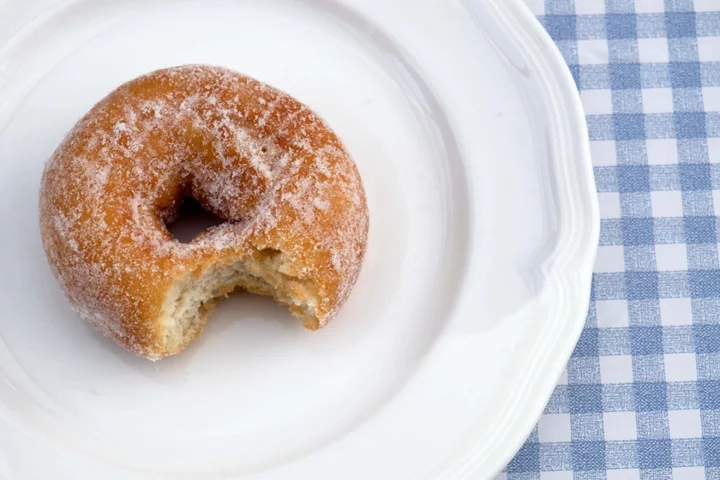
Consuming foods with added sugars may increase risk of kidney stones – study
Consuming foods with added sugars – such as soft drinks, ice-cream and cakes – may increase the risk of developing kidney stones, according to scientists. Researchers have found that those in the US with the highest intake of added sugars had nearly 40% greater odds of developing kidney stones. They said this association was more prevalent among Asians as well as Native Americans. But the researchers pointed out that their study, published in the journal Frontiers, does not show how exactly added sugars increases the risk of kidney stones. Lead author Dr Shan Yin, a researcher at the Affiliated Hospital of North Sichuan Medical College, Nanchong, China, said: “Ours is the first study to report an association between added sugar consumption and kidney stones. “It suggests that limiting added sugar intake may help to prevent the formation of kidney stones.” One in 11 people will get stone symptoms during their lifetime, according to The British Association of Urological Surgeons. Ours is the first study to report an association between added sugar consumption and kidney stones. Dr Shan Yin Known risk factors include obesity, inflammatory bowel disease, diabetes, and being an adult male. For the study, the Dr Yin and colleagues analysed data from more than 28,000 people who were part of the US National Health and Nutrition Examination Survey (NHANES) survey. Each person’s daily intake of added sugars was estimated from their self reported food and drink consumption. They also received a healthy eating index score (HEI-2015), based on the food they ate, whether it was beneficial foods such as fruits, vegetables, and whole grains, or less healthy options such as refined grains or saturated fat. The researchers adjusted for factors such as gender, age, race or ethnicity, income, body mass index, HEI-2015 score, smoking status, and whether the people taking part in the study had a history of diabetes. The researchers said people who received more than 25% of their total energy from added sugars had a 88% greater odds than those who had less than 5% of their total energy from added sugars. Results also showed people below poverty levels had greater odds of developing kidney stones when exposed to more added sugars than those at or slightly above poverty levels. Dr Yin said: “Further studies are needed to explore the association between added sugar and various diseases or pathological conditions in detail. “For example, what types of kidney stones are most associated with added sugar intake? “How much should we reduce our consumption of added sugars to lower the risk of kidney stone formation? “Nevertheless, our findings already offer valuable insights for decision-makers.” Read More Charity boss speaks out over ‘traumatic’ encounter with royal aide Ukraine war’s heaviest fight rages in east - follow live Why TikTok is going wild for lip oil 5 late summer blooms to plant now Why have the birds disappeared from my garden?
2023-08-04 15:57

3 great abs exercises that aren’t crunches
Most of us have been guilty of doing a huge number of crunches in the hope of making our tummies trimmer. Then, two weeks later, we’re disappointed nothing seems to have changed. “Think abs and we tend to think ‘six-pack’ (visible or not) – the long muscle that extends along the front of the abdomen,” says PT and fitness expert, Laura Williams. “This often makes crunches our go-to move when it comes to the tum. But the abdominal muscles also include your waist muscles – your obliques – and one of your main core muscles, the transversus abdominis.” Targeting these areas, she says, with a variety of exercises, will help to strengthen all the important muscles of the abdominal area, as well as those in the upper back and hips, helping with everything from a stronger core to preventing injury. 1. Heel Tap Why: Works core muscles. How: From a lying position with legs bent above hips, lower one heel towards the floor, then lift back up. Change sides. Do a total of 12 lowers. Tip: Try to keep your back flat on the mat. 2. Seated Sprinter Why: Works the waist, hip and thigh muscles. How: From a seated position, with both legs off the floor, extend one leg out in front of you and bring the opposite arm towards your inside knee. Repeat on the other side. Do a total of 12 twists. Tip: Keep your torso lifted throughout. Place feet on the floor to make this easier if needed. 3. Pulsing Side Plank Why: Works the shoulder, hip, thigh and waist muscles. How: Lying on your side, raise your body into the air with your weight on the side of your foot and your bottom arm. Rest your top arm on your bottom shoulder and lower your body a short way to the ground before pushing back up. Do 15 pulses. Change sides. Tip: Reduce your range of movement if you fatigue. Read More Charity boss speaks out over ‘traumatic’ encounter with royal aide Ukraine war’s heaviest fight rages in east - follow live Twiggy: I did not plan to get into modelling ‘Women short-changed as 65% of weekly working hours ignored in official data’ How to wear the casual tailoring look in summer
2023-08-03 16:26
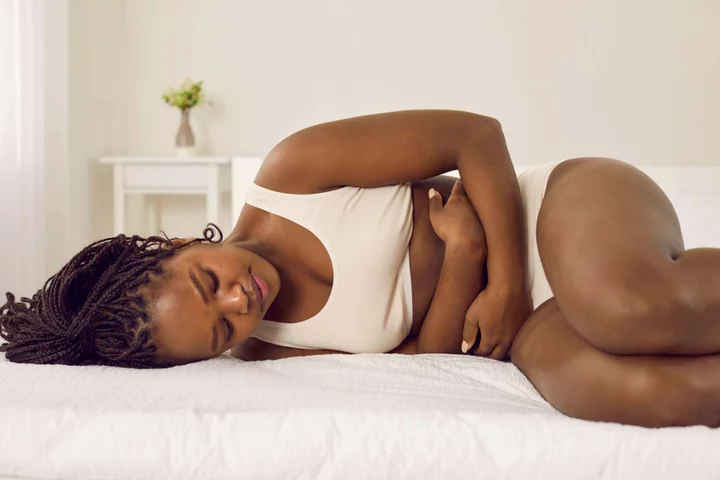
What is premenstrual dysphoric disorder?
Premenstrual Dysphoric Disorder (PMDD) is a severe form of premenstrual syndrome (PMS), and is thought to affect more than one in 20 menstruating women. Actor and stand-up comedian Bella Humphries suffers from PMDD, and told the BBC: “My period sometimes makes me want to take my life.” According to the International Association for Premenstrual Disorders (IAPMD), 34% of the people who have been diagnosed with the condition have attempted suicide. Humphries, 29, continued: “It’s secrecy and silence that will kill people, not the disease or the disorder.” According to the IAPMD, it takes on average 12 years to be diagnosed with the condition. Here’s everything you need to know about it… What is PMDD? PMDD is a severe form of PMS, and is characterised by debilitating physical and emotional symptoms that occur during the time between ovulation and when the period is due to begin. This is known as the luteal phase and lasts around two weeks – although the length can vary from person to person. In June 2019, the World Health Organisation (WHO) added PMDD to the International Statistical Classification of Diseases and Related Health Problems, meaning it’s now recognised as a legitimate medical diagnosis. What are the symptoms? People with PMDD might experience a broad range of symptoms, and it’s different for everyone. “In PMDD, symptoms are extreme and can seriously impact quality of life, work and relationships. Many women report feeling suicidal,” said Dr Ghazala Aziz-Scott, a specialist in integrative women’s health and bioidentical hormone balancing for the Marion Gluck Clinic. “Symptoms can be cyclical and chronic – they include mood swings, anger, irritability, anger, anxiety, depression, anhedonia [the reduced ability to experience pleasure], fatigue, and brain fog. Physical symptoms include breast tenderness, headaches, bloating, food cravings, and insomnia.” Are there any treatments? Treatments can include “antidepressants, oral contraception and counselling”, said physician associate Simisola Ade. “A discussion with a doctor should be had to decide on what treatment is appropriate and how bad the PMDD symptoms are.” Aziz-Scott continued: “PMDD has a complex aetiology [causes] and it is vital to evaluate the root cause of the hormonal imbalance and if there are also any coexisting psychiatric conditions. “A healthy diet and good lifestyle can go a long way in supporting the body, B6 and magnesium supplementation are helpful and the use of natural progesterone in the second half of the cycle can be very beneficial.” What other things can people do to help? “Women who have PMDD need to be mindful and easy with themselves. Self-care is very important,” said Ade. “Also keeping a cycle diary is key, especially if you suspect you have PMDD, because some people aren’t aware that they have PMDD until they actually start tracking their symptoms and notice that they are cyclical. This can also help diagnosis and treatment be much quicker. “Talking to other people who have PMDD can be very beneficial too. There are international organisations that can help. Be open with your doctor and tailor treatments for yourself to ensure you put things in place when you are in that luteal phase. Getting to know your PMDD symptoms will help to make those symptoms more bearable.” Dr Adiele Hoffman, medical advisor at Flo Health agrees and said: “It’s very common to experience both emotional and physical discomfort in the days leading up to your period. However, these symptoms should not be so severe that they significantly impact your life, work, your family, or your other relationships. “But if they do, however, consistently affect your life, you should show these logs to a doctor. It can be very helpful for the doctor prescribing appropriate treatment. Most importantly, remember that no one should have to live with debilitating PMDD symptoms.” Read More Charity boss speaks out over ‘traumatic’ encounter with royal aide Ukraine war’s heaviest fight rages in east - follow live JW Anderson is teaming up with a major tennis star for new collection N-Dubz cement comeback with first new album in 13 years Irregular sleep patterns linked to harmful gut bacteria, study suggests
2023-08-02 21:54
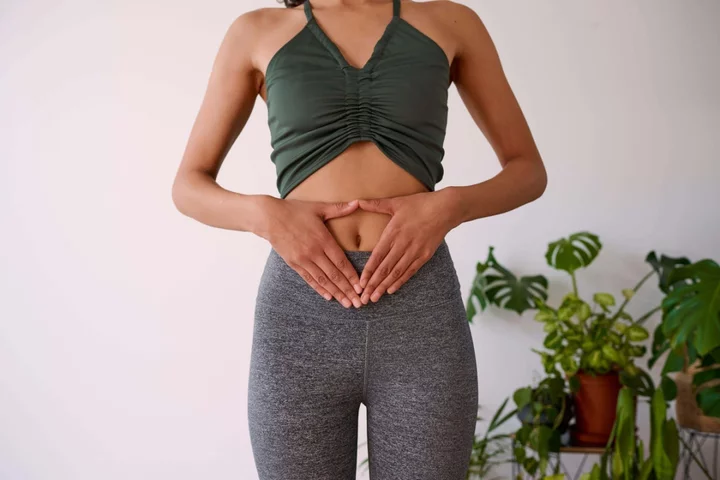
Irregular sleep patterns linked to harmful gut bacteria, study suggests
Irregular sleep patterns may be linked to harmful bacteria in your gut, new research suggests. The study is the first to find multiple associations between social jet lag – the shift in internal body clock when sleeping patterns change between workdays and free days – and diet quality, diet habits, inflammation and gut microbiome (bacteria) composition. According to the findings, even a 90-minute difference in the midpoint of sleep – half-way between sleep time and wake-up time – can encourage microbiome that has negative associations with health. Previous research has suggested that working shifts disrupts the body clock and can increase risk of weight gain, heart problems and diabetes. This is the first study to show that even small differences in sleep timings across the week seems to be linked to differences in gut bacterial species Dr Wendy Hall King’s College London However, according to researchers from King’s College London there is less awareness that the body’s biological rhythms can be affected by smaller inconsistencies in sleeping patterns. This is due to people working regular hours waking early with an alarm clock on workdays compared to waking naturally on non-workdays. Senior author Dr Wendy Hall from King’s College London, said: “We know that major disruptions in sleep, such as shift work, can have a profound impact on your health. “This is the first study to show that even small differences in sleep timings across the week seems to be linked to differences in gut bacterial species. “Some of these associations were linked to dietary differences but our data also indicates that other, as yet unknown, factors may be involved. “We need intervention trials to find out whether improving sleep time consistency can lead to beneficial changes in the gut microbiome and related health outcomes.” First author Kate Bermingham, from King’s College London and senior nutrition scientist at ZOE, said: “Sleep is a key pillar of health, and this research is particularly timely given the growing interest in circadian rhythms and the gut microbiome. “Even a 90-minute difference in the mid-point of sleep can encourage microbiota species which have unfavourable associations with your health.” Researchers suggest the composition of the microbes in the gut may negatively or positively affect health by producing toxins or beneficial products. Specific species of microbes can correspond to an individual’s risk of long-term health conditions such as diabetes, heart disease and obesity. The microbiome is influenced by what food someone eats, which makes the diversity of the gut adjustable. Researchers assessed a group of 934 people from the ZOE Predict study, the largest ongoing nutritional study of its kind. They looked at blood, stool and gut microbiome samples, as well as glucose measurements in people whose sleep was irregular compared to those who had a routine sleep schedule. Unlike past research, the group consisted of mainly lean and healthy individuals with most of them getting more than seven hours sleep throughout the week. The study, published in The European Journal of Nutrition, found that just a 90-minute difference in the timing of the midpoint of sleep is associated with differences in what the gut microbiome is made up of. According to the findings, having social jet lag was associated with lower overall diet quality, higher intakes of sugar-sweetened beverages, and lower intakes of fruits and nuts. This may directly influence the abundance of specific microbiota in the gut, researchers say. Three out of the six microbiota species more abundant in the social jet lag group have what researchers describe as unfavourable associations with health. They are linked with poor diet quality, indicators of obesity and cardiometabolic health, like heart attack, stroke, and diabetes, and markers in your blood related to higher levels of inflammation and cardiovascular risk. Previous research has found social jet lag is associated with weight gain, chronic illness and mental fatigue. Dr Sarah Berry from King’s College London and chief scientist at ZOE added: “Maintaining regular sleep patterns, so when we go to bed and when we wake each day, is an easily adjustable lifestyle behaviour we can all do, that may impact your health via your gut microbiome for the better.” Read More Charity boss speaks out over ‘traumatic’ encounter with royal aide Ukraine war’s heaviest fight rages in east - follow live N-Dubz cement comeback with first new album in 13 years Babies as young as four months have taste in fine art, study shows ADHD symptoms in children can be transformed with brain stimulation therapy
2023-08-02 17:28

Babies as young as four months have taste in fine art, study shows
Our taste in fine art can develop from a very early age, researchers have said, after they found babies as young as four months can demonstrate artistic preferences. When shown landscapes by the Dutch post-impressionist painter Vincent van Gogh, psychologists at the University of Sussex found both babies and adults mostly favoured the same paintings, with Green Corn Stalks (1888) proving to be the most popular. The team at the university’s Sussex Baby Lab also uncovered that infants liked paintings that had more edges – such as those featuring leaves or branches – and curved lines. In their findings, published in the Journal of Vision, the researchers said aspects of artistic preferences may be hardwired from an early age. Our study also appears to have identified features of adult aesthetics that can be traced back to sensory biases in infancy Philip McAdams Philip McAdams, a doctoral researcher at the University of Sussex and lead author on the paper, said: “It was fascinating to find that babies respond to the basic building blocks of the paintings, such as edges and colours, and that these properties could explain large amounts of why babies look at, and adults like, particular artworks. “Our study also appears to have identified features of adult aesthetics that can be traced back to sensory biases in infancy. “Our findings show that babies’ visual systems and visual preferences are more sophisticated than commonly thought.” For the study, which was in collaboration with children’s sensory brand, Etta Loves, the researchers recruited 25 babies, aged four to eight months, and 25 adults. The babies sat on their parent’s lap while 40 pairs of images, featuring landscape paintings by Van Gogh, were shown on a tablet. Adults were also shown the same paintings and asked which image in the pair they found to be more pleasant. Recordings showed babies looked longer at the Van Gogh landscapes that adults also rated as most pleasant. These paintings featured high colour and lightness contrasts as well as lots of the colour green. The most preferred Van Gogh painting was Green Corn Stalks whilst the least preferred was Olive Grove (1889). But researchers also found small differences in the artistic tastes between adults and babies. For example, they found that infants preferred paintings that contained the most edges and curved lines, which the adults did not seem to favour. Professor Anna Franklin, head of the Sussex Colour Group and founder of the Sussex Baby Lab, and lead author on the paper, said: “We’ve been amazed by how much the young babies responded to the art. “Although newborn babies’ vision is very blurry, our findings demonstrate that by four months old, babies can see well enough to look longer at some paintings than others, and can pay attention to many of the artistic details.”
2023-08-02 16:16
